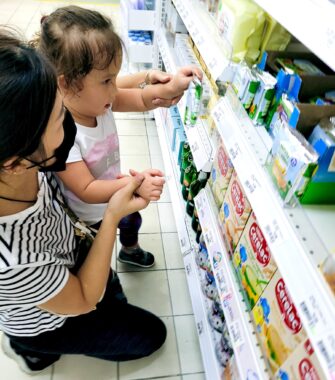How routine trips to the grocery store became therapy sessions
The benefits of incorporating play and learning into our daughter's routine

Even before our daughter, Rylae-Ann, had gene therapy, we knew that she would require immediate and intensive intervention due to her rare disease. There was little guidance on what to do, but my wife, Judy, and I realized we’d have to drastically change our lifestyle as parents to meet her needs.
Aromatic l-amino acid decarboxylase (AADC) deficiency is a debilitating disease that leaves children very dependent on their parents and care team to thrive. When we learned Rylae-Ann had this neurotransmitter disorder, we had to adapt every aspect of our lives. This change took several years to craft, and we did a lot of experimenting and guessing. But the premise for our method was simple: make learning fun yet challenging, routine but novel, and playful yet educational.
We embedded this strategy into our daily practice — partly because we had mounting medical bills, and therapy sessions were charged at a hefty hourly rate that even lawyers would envy. But also because we saw her all day, every day. Incorporating learning and therapy sessions into our daily routine provided an opportunity to make significant progress.

Rylae-Ann’s parents turn routine tasks like going to the supermarket into fun learning experiences. (Photo by Richard E. Poulin III)
Family trips to the grocery store
Our family goes to the store a few times each week to buy food and necessities. We prefer to buy fresh foods and get only a little at a time. Several years ago, we began applying our methodology to these trips.
As we navigated the aisles, Judy and I would act as puppeteers to help Rylae-Ann practice walking. As we scanned the shelves for food, we used our daughter’s hands to touch the fruit and learn new vocabulary words. Every part of our trip to purchase groceries incorporated learning and became a part of our new lifestyle.
Each trip was a fun challenge for us as parents as well. As we thought of ways to make the experience more fun and engaging, the grocery store became our classroom and therapy center. There were endless possibilities.
The cool air was another great feature of using the grocery store for learning. Rylae-Ann grew up in the tropics, and regulating body temperature is challenging for someone with AADC deficiency. She was always sweating. We did our best to try and keep her cool and dry, as her body seemed to favor cool air — but that’s a luxury in Southeast Asia.
If we tried to accomplish the same routine for the same amount of time outside, Rylae-Ann would be drenched. We reserved most of our trips to the park for the mornings and evenings.

Rylae-Ann’s mom supports her as they practice standing, grab necessary items, and learn new words during a shopping trip. (Photo by Richard E. Poulin III)
Applying the methodology to everyday life
Our trips to the grocery store were only the beginning. Judy and I began to analyze every part of our day with our daughter. Each moment became an opportunity to implement therapy sessions and make progress. Creating this lifestyle before gene therapy prepared us extensively for when Rylae-Ann would finally be able to make substantial progress after it.
Today, we still have the same approach. It became natural over time and is now just the way we do things.
Starting with routine tasks, evaluate how you can transform them into a lifestyle that supports your child’s needs. Very quickly, you will see your journey filled with results.
Note: AADC News is strictly a news and information website about the disease. It does not provide medical advice, diagnosis, or treatment. This content is not intended to be a substitute for professional medical advice, diagnosis, or treatment. Always seek the advice of your physician or other qualified health provider with any questions you may have regarding a medical condition. Never disregard professional medical advice or delay in seeking it because of something you have read on this website. The opinions expressed in this column are not those of AADC News or its parent company, Bionews, and are intended to spark discussion about issues pertaining to aromatic l-amino acid decarboxylase deficiency.








Comments